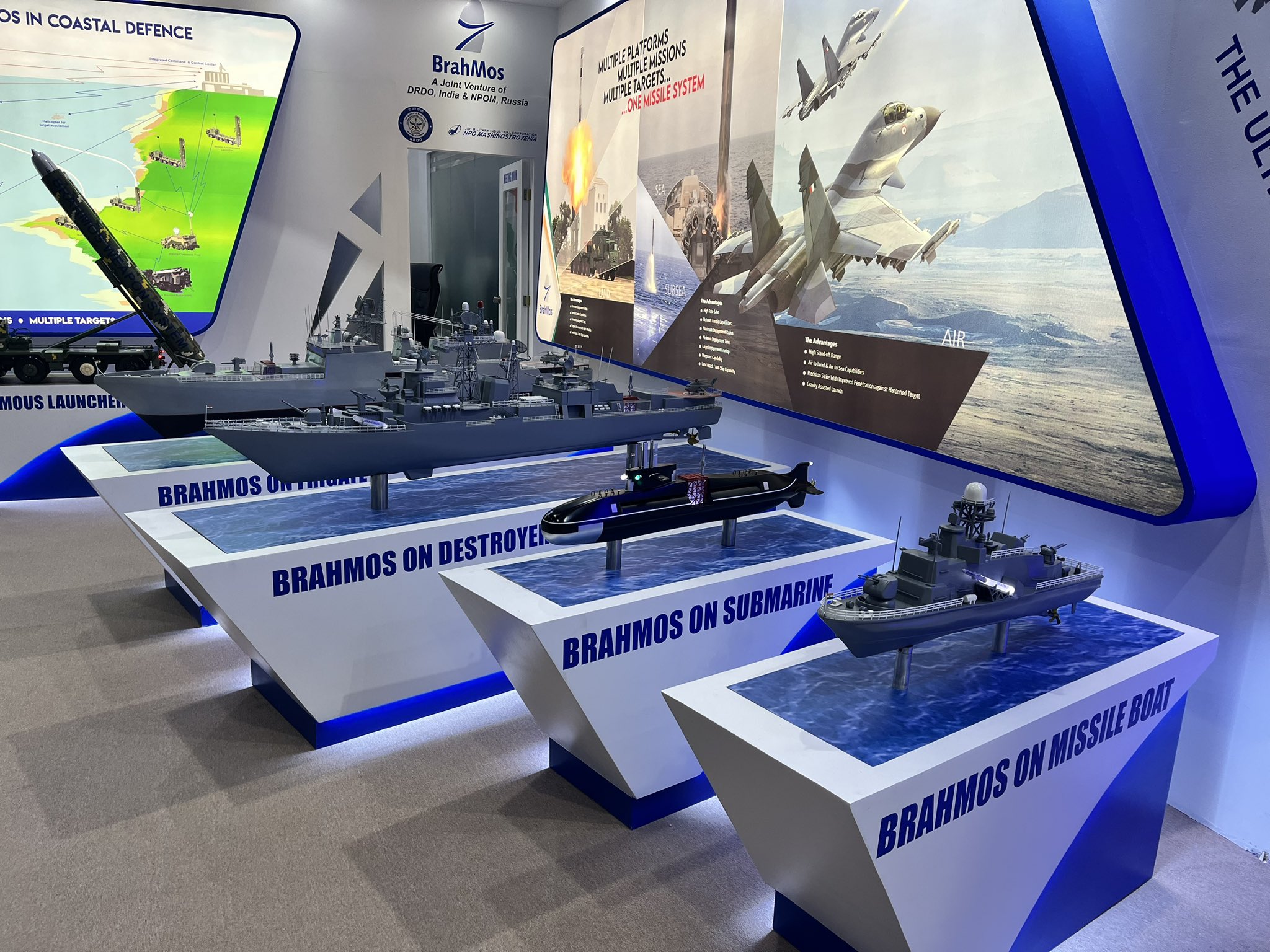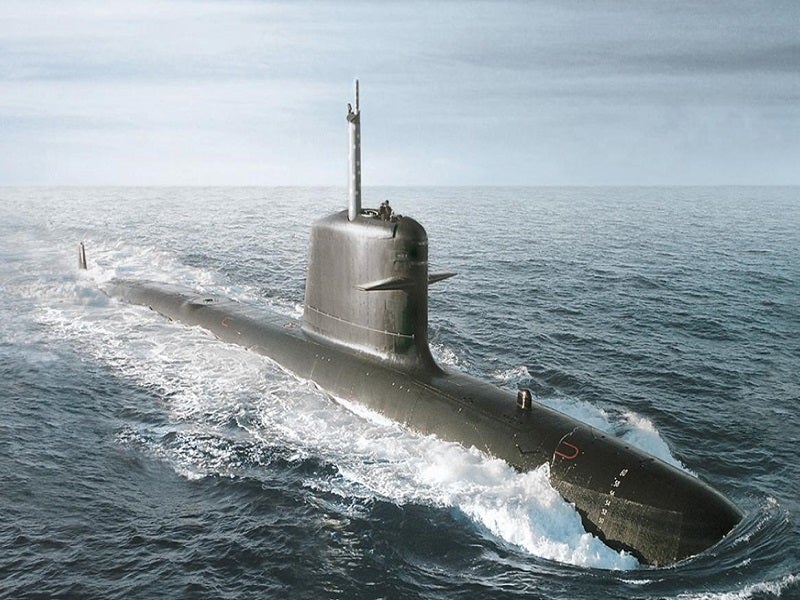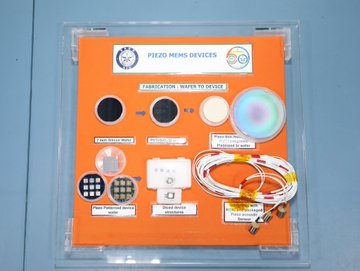SOURCE: RAUNAK KUNDE / NEWS BEAT / IDRW.ORG

On June 22, President Joe Biden will welcome Indian Prime Minister Narendra Modi for an official state visit to the United States. The visit is seen as an opportunity to strengthen Indo-US military ties and reduce India’s dependence on Russian military hardware. One key development that is expected to be discussed during the visit is the clearance of General Electric’s proposed plans to locally manufacture its F414 engines in India.
Last week, it was reported that the US administration had made inquiries to General Electric regarding its plans to manufacture the F414 engine in India. The US government asked about the number of F414-powered fighter jets that India intends to procure and how it plans to enforce its intellectual property rights (IPR) in India, where General Electric has claimed complete transfer of technology (ToT) along with hot engine sections.
Continue readingSOURCE: RAUNAK KUNDE / NEWS BEAT / IDRW.ORG

Airbus Defence & Space officials recently visited India to explore potential partnerships for the supply chain of the Airbus A400M Atlas, a military cargo aircraft that is currently manufactured in Seville, Spain. The A400M Atlas is a strategic airlifter designed to perform a range of military and humanitarian operations, including the transportation of troops, equipment, and supplies. The aircraft has a maximum payload capacity of 37 tonnes and can carry a range of vehicles, including tanks and helicopters.
idrw has learned that A400M is an offer to India on the line of a C-295M Transporter Aircraft deal that is to be locally manufactured by the Tata Group in a joint venture with Airbus.
Continue readingSOURCE: RAUNAK KUNDE / NEWS BEAT / IDRW.ORG
)
The Indian Navy has begun receiving the MH-60R multi-role anti-submarine warfare helicopters under a 2020 deal with US defence contractor Lockheed Martin. The order for 24 units is expected to be fulfilled by 2025, and there are plans to acquire more MH-60Rs under the Foreign Military Sales program from the US government.
While the specific number of units to be procured is yet to be confirmed, it is likely to be a smaller order, perhaps in single digits. The purpose of this additional purchase is to enhance anti-submarine operations in the face of China’s increasing presence in the waters around India.
Continue readingSOURCE: RAUNAK KUNDE / NEWS BEAT / IDRW.ORG

BrahMos Aerospace’s General Manager for Market Promotion & Export, Praveen Pathak, has recently confirmed that the delivery of BrahMos supersonic cruise missiles to the Philippine Marines is expected to be completed by December 2023.
“Most of all the technical issues have been finalized.… We’re very much positive that the Army will follow the footsteps of the Marines and we’ll sign a contract very soon,” he says. “No fixed timeline but we are expecting this year that we will sign the first contract,” he adds.
Continue readingSOURCE: RAUNAK KUNDE / NEWS BEAT / IDRW.ORG

In September of last year, the Cabinet Committee on Security (CCS) approved the LCA Mk2 program. Hindustan Aeronautics Limited (HAL), a state-owned aerospace and defence company, confirmed that the company’s Director (Finance), Ananthakrishnan, HAL plans to roll out a prototype by September 2025, exactly 36 months from the CCS clearance, and the first flight is scheduled for 2026.
There are plans for three additional prototypes of the LCA Mk-2 fighter, which will be rolled out with an eight-month gap between each. Initially, the LCA Mk2 Project Director at Aeronautical Development Agency (ADA), Dr V Madhusudana Rao, announced that four prototypes would be used for complete flight testing and weapon testing, with testing concluding by the end of 2027 so that production could begin in 2028.
Continue readingSOURCE: RAUNAK KUNDE / NEWS BEAT / IDRW.ORG

The conflict in Ukraine has exposed a vulnerability in the Russian Main Battle Tank, which has captured the Indian Army’s attention as it pursues its ambitious Future Ready Combat Vehicle (FRCV) initiative. The FRCV project aims to phase out the T-72 Main Battle Tanks supplied by the Soviet Union from 2030 onward.
While the Indian Army has prioritized the creation of a Light Tank for high altitude regions to keep up with Chinese firepower, Project Zorwar will also provide vital insights for the FRCV’s development. The FRCV will integrate advancements in asymmetric technologies and address emerging threats against armored formations.
Continue readingSOURCE: RAUNAK KUNDE / NEWS BEAT / IDRW.ORG

The Indian Navy has expressed interest in equipping its six Kalvari-class submarines with lithium battery packs and is looking to collaborate with local industrial partners in the country and the French Naval Group to achieve this goal. The French Naval Group, which is currently working with the DRDO to integrate a fuel cell-based air-independent propulsion (AIP) system into the first submarine of its class starting in 2025, has offered its expertise to help integrate lithium battery packs into the Kalvari-class submarine fleet.
The use of lithium battery packs in submarines offers several advantages, including increased endurance and efficiency, reduced maintenance costs, and improved safety. The Indian Navy has been actively pursuing advanced technologies to upgrade its submarine fleet and enhance its operational capabilities.
Continue readingSOURCE: RAUNAK KUNDE / NEWS BEAT / IDRW.ORG
India’s request to jointly develop a Hypersonic BrahMos-2K cruise missile with a liquid-fuel scramjet motor coming from the second stage of Russia’s Zircon hypersonic cruise missile might see a Russian nod in the coming days as per people familiar with the matter close to idrw.
The Zircon hypersonic missile can theoretically climb to speeds of Mach 8-9 due to its liquid-fuel scramjet motor. However, the Indian-specific variant of the missile, the BrahMos-2K, will be modified to reach speeds of Mach 6. India will develop a booster stage with solid-fuel engines, along with a winged airframe and an AESA band seeker.
Continue readingSOURCE: RAUNAK KUNDE / NEWS BEAT / IDRW.ORG

A team of researchers from the Indian Institute of Technology Madras and the Defence Research and Development Organisation (DRDO) have collaborated to develop a Piezoelectric MEMS (Micro Electro Mechanical System) technology sensor for underwater communications, with potential benefits for defence applications, particularly in the naval forces.
According to the Director of DRDO Industry Academia- Ramanujan Centre of Excellence (DIA-RCoE) at IIT Madras, Dr O.R. Nandagopan, this technology has reached a level of maturity that allows for its conversion into a system with the help of Indian industry. He further added that it will be a groundbreaking technology in this field, contributing towards India’s ‘Aatma Nirbhar Bharat’ initiative in underwater materials and micro device processing technology.
Continue readingSOURCE: RAUNAK KUNDE / NEWS BEAT / IDRW.ORG

The Ministry of Defence, Government of India has issued a Request for Information (RFI) for the procurement of approximately 823 High Mobility Vehicle 8×8 General Service.
The vehicles will be used for transporting heavy equipment on metalled roads and tracks, including towing of trailers loaded with tanks and other equipment weighing up to 50 tons. The platform should facilitate modification for other uses, including troop carriage, containerization, and other specialist roles.
Continue readingSOURCE: RAUNAK KUNDE / NEWS BEAT / IDRW.ORG

Sources familiar with the matter have informed idrw that the current generation engines being offered to India cannot be upgraded later to incorporate into a 6th generation program. Short-sightedness in this regard may lead India to a similar import-dependence situation as the lack of funding for the Kaveri program did.
According to an eminent scientist who wished to remain anonymous, 6th generation fighter jets will require Variable Cycle Engines (VCE), and India will be left with engine technology that was designed 30 years ago for a jet that will be released in 10 years and will soon become obsolete.
Continue readingSOURCE: RAUNAK KUNDE / NEWS BEAT / IDRW.ORG
The recent crash of a Mig-21 fighter jet has once again drawn attention to the ageing fleet of the Indian Air Force (IAF), which will continue to be in service until 2025. Moreover, one more squadron is planned to be phased out later this year.
Presently, IAF operates only three Mig-21Bis squadrons that are deployed at forward airbases in the western sector. The delivery of domestically manufactured Tejas Mk1A fighter jets is expected to commence next year, and it is hoped that they will replace the Mig-21 fleet.
Continue readingSOURCE: RAUNAK KUNDE / NEWS BEAT / IDRW.ORG

Tata Advanced Systems Limited (TASL) has begun delivering its ALS 50 loitering munition to the Indian Air Force (IAF). This drone is capable of vertical takeoff and landing (VTOL) and has demonstrated its ability to conduct precise strikes during trials and tests.
The IAF has procured 100 ALS 50 loitering munitions, and delivery is expected to be completed by the end of the year. The drone has a length of 2.4 meters, a wingspan of 3.8 meters, and a maximum takeoff weight of 50 kg.
Continue readingSOURCE: RAUNAK KUNDE / NEWS BEAT / IDRW.ORG

As part of its modernization efforts, the Indian Air Force (IAF) is looking at indigenous fighter jet programs to replace its ageing fleet. The IAF plans to retire 150 aircraft by 2035 and an additional 100 by 2040, highlighting the need for new aircraft to maintain its combat capabilities. With concerns raised about the dwindling strength of the Air Force, the IAF is looking to ramp up its modernization programs to avoid hitting rock bottom in the next 10 years.
The IAF has been grappling with the challenges of an ageing fleet for some time now, with many of its aircraft nearing the end of their operational lifespan. The retirement of these aircraft will create a significant gap in the IAF’s combat capabilities, underscoring the need for new aircraft to fill the void.
Continue readingSOURCE: RAUNAK KUNDE / NEWS BEAT / IDRW.ORG
The Indian Air Force (IAF) has been facing a shortage of Flight Refuelling Aircraft (FRA) in its fleet, which has resulted in the adoption of alternative methods to impart Air to Air Refuelling (AAR) skills to its pilots. Due to the limited availability of FRAs, the IAF has started using the buddy-buddy aerial refuelling method to train its pilots on AAR procedures.
Despite operating six Ilyushin IL-78 air-to-air refuelling tanker aircraft, the Indian Air Force (IAF) has been struggling with low fleet availability rates, which have been hovering around 50%. The IAF has also been unable to acquire the additional six next-generation air-to-air refuelling tanker aircraft that it requires, despite the fleet requirement being at 18 aircraft for the past two decades.
Continue reading